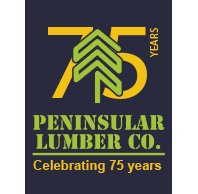Which grade of plywood is best for your project?
The use of plywood is very common in home construction and home improvement projects. These tried-and-true building materials have been used by custom home builders for decades. If you’re new to using plywood or lumber, there are certain things you might not quite understand. For instance, you may assume that all plywood is the same, but it’s not. There are a few different ranking factors that determine the quality and usefulness of plywood in a variety of projects. Today, we’re going to take a look at the four grades of plywood and how they relate to different construction needs.
Four Grades of Plywood
There are four grades of plywood – A, B, C, and D. A fifth called C-plugged exists, as well, but it isn’t used very often. Therefore, for all intents and purposes, the grading system consists of four types, with the basic differences consisting of the number of defects and the amount of work a woodmill has put into fixing those defects.
Here’s a simple breakdown:
Plywood Grades A & B
The first two grades, as you might expect, are the highest quality and the most expensive. Grade A is typically free of repairs and knots, which makes this the absolute best.
Grade B is a very close second. Any large knots are patched over so that the entire panel can be sanded and finished. This grade might also have some tight knots up to 1 inch and minor splits.
Plywood Grades C & D
Despite having flaws, these two grades are still great for many different types of projects. They’re often chosen because you’ll pay less for these grades than the top two. Grade C is defined by having tight knots up to 1.5 inches and knotholes up to 1 inch, with some splits and discoloration. Grade D is generally the same quality except that knots and knotholes may be as big as 2.5 inches.
Two Grades Per Sheet
Some people are initially confused even when they know the four grade because they’ll notice that each sheet of plywood is given two separate letters, such as AC. The first letter of this grading system refers to the face veneer grade and the second letter is for the back veneer. You might also see a third letter of X, as in ACX, which designates that the plywood is for exterior use.
Home Construction Vs. Improvement
There’s a pretty big difference between the plywood you would use in a home construction project and a home improvement project. We’ll go into detail a little more below, but the general idea is that home construction will often require plywood that’s more durable, especially against the elements.
It also depends on what type of home improvement project you’re doing. Cabinets in the kitchen will require a higher grade than what you’d probably need for shelving in the garage or storage cabinets in the basement, where functionality is more important than appearance.
Indoor Vs. Outdoor Plywood
When you’re in the market for plywood, the first question you’ll need to answer is whether you’re constructing an indoor or outdoor project. As you’ll see when you visit a lumber yard, plywood manufacturers are very careful about the differences between plywood that’s needed for indoor or outdoor use. They’re labeled very clearly to ensure that you’re purchasing the right plywood for the job.
Plywood for Indoor Projects
Since indoor projects such as bedroom furniture and cabinets won’t be exposed to weather elements, you have a wide range of plywood that can be used. Many homeowners love using pine veneers, which may be labeled something like “Sanded Pine BC,” for simple wood projects. These are relatively inexpensive and have one side that’s been sanded for painting or finishing, but that’s only one option of several.
Plywood for Outdoor Projects
With any outdoor project, it’s imperative that you consider the effect that weather – especially in places like Florida – will have on the plywood’s surface. You don’t want to go with the same type of plywood that’s commonly used indoors because just a few months of exposure to rain, the sun, and even insects might be enough to practically destroy it. What you’ll want to do is work with a reputable lumber yard to choose a type of outdoor, weather-resistant plywood that can withstand years of outside elements.
Contact Peninsular Lumber to Learn More About Grades of Plywood
Peninsular Lumber Company in Tampa can help you find the right types of building materials for your custom home building projects. If you have any questions about the different grades of plywood or would like to visit our lumber store, reach out to us at (813) 875-8805 today.



